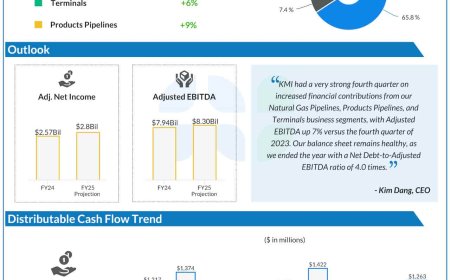Shopper spending trends this season
Despite low consumer confidence, shoppers eagerly anticipate this year’s holiday sales. According to the EY Future Consumer Index, which surveys 13,000 respondents, 69% of global consumers intend to participate in this year’s value hunt.

IN BRIEF:
• According to EY research, 69% of global consumers will participate in this year’s value hunt, with one-third indicating they will spend more than last year.
• Smart, savvy, and shrewd consumers are willing to switch between channels for what they want, intensifying shopping channel fragmentation.
Despite low consumer confidence, shoppers eagerly anticipate this year’s holiday sales. According to the EY Future Consumer Index, which surveys 13,000 respondents, 69% of global consumers intend to participate in this year’s value hunt. The data also reveal subtle yet significant shifts in consumer shopping plans, expectations, and values — trends that are expected to influence consumer behavior well beyond the holiday sales.
Shoppers are considered “smart” for utilizing a full range of channels and technologies to obtain what they want; “savvy” for their ability to evaluate marketing and promotional offers; and “shrewd” for being more discerning about what value means to them.
ANTICIPATING DEALS AND STRETCHING BUDGETS
The value hunt began earlier this year, with companies initiating seasonal sales in September or October partly in response to the US Thanksgiving holiday falling at the end of November, shortening the traditional five-week spending period by a week. Despite this, 52% of global consumers will delay spending for the holidays, anticipating better deals. Most global consumers plan to only purchase products on sale this year, with 67% actively tracking market offers — rising to 73% among consumers with children.
In the Philippines, two online shopping platforms have seen year-on-year growth surges, with customers anticipating monthly deals such as 11.11 and 12.12 sales. One shopping platform saw a nine-fold increase in customer engagement throughout its 11.11 sale as customers earned discounts by participating in daily check-ins and challenges. One food and beverage corporation observed strong consumer Christmas spending based on the sales of their gift packages, pointing to an increase in sales from the previous year.
Shoppers are also more deliberate about when and how they spend, often due to cost concerns. Nearly half will be using loans, credit cards, and buy-now-pay-later solutions to defer shopping costs. However, not all consumers are borrowing; about half report having saved for the festive season. Regardless of the source of their funds, more consumers are determined to spend wisely this year, preferring to purchase items with lasting value and invest more in technology.
For many consumers, festive shopping behavior is not driven by bargain hunting, with 48% of global consumers stating they will purchase the ideal gift regardless of whether it is on sale. Additionally, 64% of consumers often question the real value of promotions they encounter in festive sales, while 58% believe that their preferred items will not be on sale anyway.
To optimize value, consumer products companies and retailers should concentrate on digital promotions and messaging. They should continuously refine digital promotions to match the consumer quest for value, and create distinctive sales promotions to quickly broaden audience reach and enhance perceived value. In addition, ensure that messaging remains current, integrated, and easily accessible throughout the holidays.
BALANCE PHYSICAL AND SOCIAL MEDIA COMMERCE
A physical store remains the primary shopping destination for 68% of consumers, but they are willing to switch between channels for what they want, intensifying ongoing fragmentation of shopping channels. The value of physical stores extends beyond the holiday atmosphere they provide, with many consumers preferring to physically experience a product before purchasing.
Nevertheless, platforms such as TikTok, YouTube, and Instagram are set to become significant sales channels this season, particularly among Chinese consumers. In China, 50% of consumers plan to purchase through social media, compared to 24% in the US and 17% globally. According to a TikTok-commissioned study conducted by research company Kantar Profiles, which looked into shopping behaviors in Southeast Asia during the festive season, 81% of Philippine TikTok users rely on TikTok to find new brands and products for the holidays while 77% of users use the platform for their Christmas shopping. Notably, 84% of Philippine TikTok users participated in its mega sales events last year, and they are 2.3 times more likely to increase spending in 2024.
Global consumers will increasingly adopt social sales channels as new capabilities enable brands to replicate the in-store experience. Leading brands are already using livestreams to create competitor-free spaces where consumers can ask about a product in real-time and click to purchase.
While the range of channels might seem overwhelming, data indicate that consumers are adept at selecting the right one for their needs. Consumers are now prioritizing price over product, a shift from the norm as the value from promotions becomes a key differentiator in deciding where to shop. Although this approach works for shoppers, it exacerbates the ongoing challenge of channel fragmentation.
To navigate the increasingly complex brand experience, companies must adopt a holistic approach to actively analyze, prioritize, and support the channels delivering the most value. Experiment with shoppable social content to accelerate the purchase journey and take advantage of impulse buying, then incorporate these insights into planning for next year.
GEN Z AND SUSTAINABLE CHOICES
Younger consumers are expected to be the most active shoppers this festive season. Gen Z, in particular, plans to increase spending across nearly every category, including clothing, technology, and experiences. These consumers can be particularly demanding, as they are impatient, seek convenience, and value sustainability, indicating trends that more consumers will likely adopt in the coming years.
Gen Z is prioritizing organic or sustainably sourced products, actively seeking brands that align with their values. A third plan to purchase second-hand goods as gifts, either to stretch their budgets or invest in higher-quality items they couldn’t afford if new.
The rise of second-hand shopping and gifting could significantly impact categories such as fashion, while popular resale platforms offer Gen Z opportunities to find unique, affordable, and environmentally friendly gifts. Some brands already capitalize on this trend by establishing or investing in resale platforms for their own goods. These platforms boost sales while helping brands, especially luxury ones, maintain a high-quality experience and limit counterfeit sales.
As digital natives, younger consumers prefer using online channels with access to peer reviews and influencer content about potential purchases. Seeing someone relatable unboxing and using items eliminates the need to see them instore.
Companies can focus on meeting Gen Z’s expectations for convenience, as they value having more control over deliveries and are likely to choose faster options, free shipping, and flexible delivery windows. For instance, 40% of Gen Z consumers value same-day delivery, compared to just 25% of Baby Boomers.
While these expectations are challenging to meet profitably, data show that 47% of younger consumers are willing to buy extra items to qualify for free shipping, compared to 35% of consumers over the age of 60. Companies that optimize their delivery logistics to meet this demand can drive additional purchases and increase their margins simultaneously.
Moreover, themes of self-care and self-reward resonate more deeply with younger consumers. Gen Zers are more interested in beauty and personal care products than clothing, possibly because they are more discerning towards what needs to be new and what can be bought used.
To connect with them during the holiday season, rethink product mixes and business models to incorporate preloved items, private labels, and emerging brands aligned with Gen Z values. Companies can create cost and distribution strategies that address their desire for control and convenience, and collaborate with influencers to enhance brand transparency and showcase value.
CONSUMER BEHAVIOR SHIFTS BEYOND THE HOLIDAYS
Despite global economic uncertainty, most consumers are enthusiastic about this year’s festive sales while also becoming more strategic, concentrating on value, utilizing various shopping channels, and being selective with promotions.
These trends signify a consumer behavior shift that will persist beyond the holidays. As consumers become more discerning, tech-savvy, and intentional towards deals, retail and consumer product companies must note how this influences their future strategies.
This article is for general information only and is not a substitute for professional advice where the facts and circumstances warrant. The views and opinions expressed above are those of the author and do not necessarily represent the views of SGV & Co.
Maria Kathrina S. Macaisa-Peña is a business consulting partner and the consumer products and retail sector leader of SGV & Co.











































